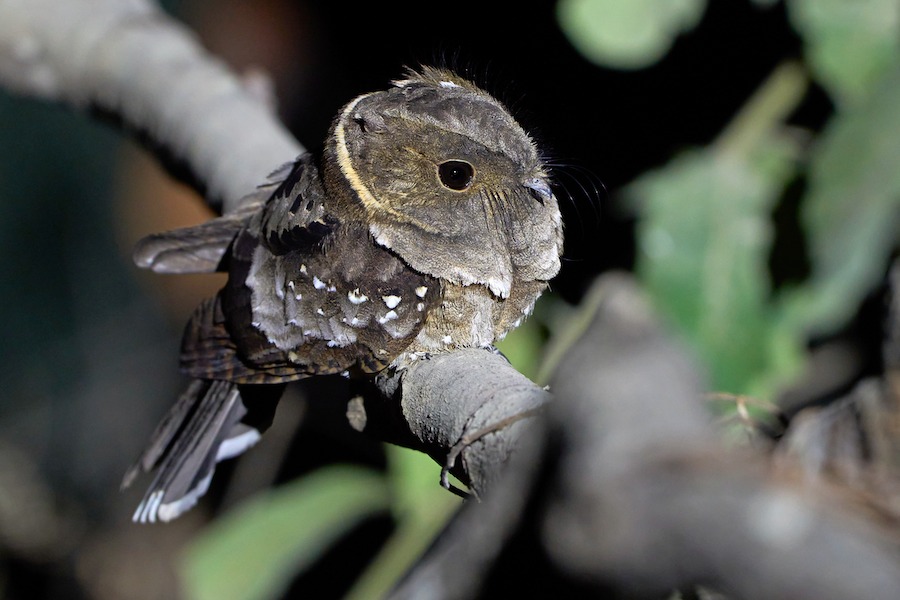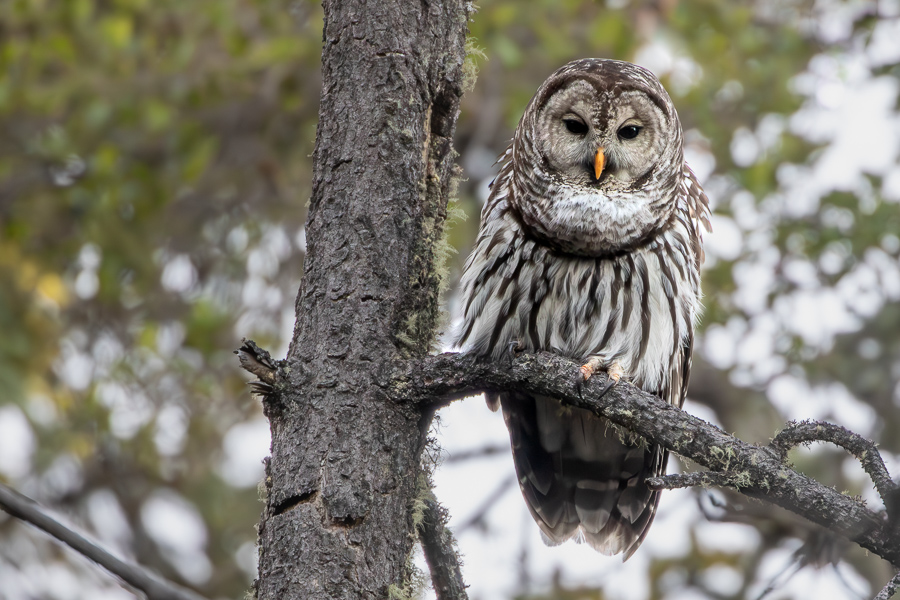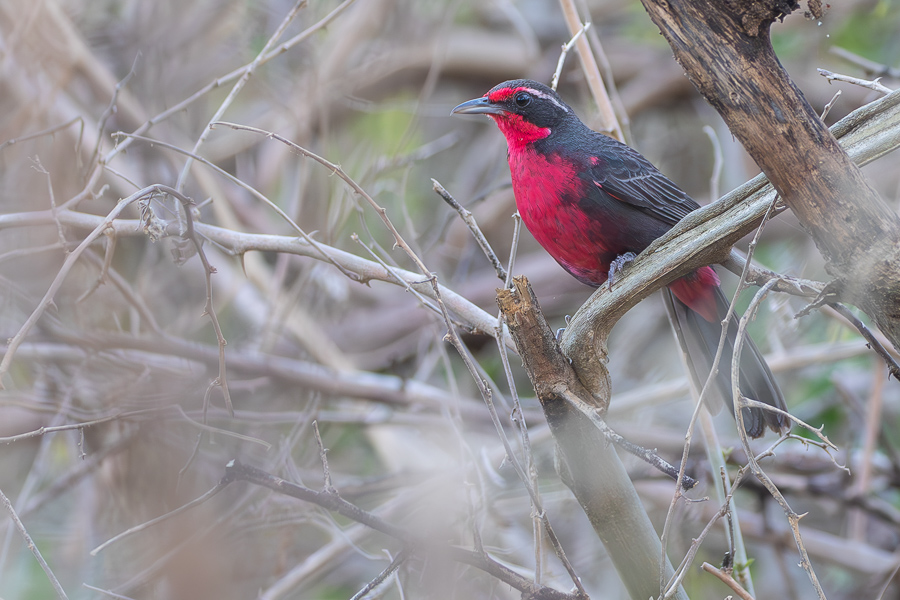Mexico: Western
Visiting classic destinations in this endemic-rich region, we will target all the specialties. Elegant Quail, Long-tailed Wood Partridge, the mega Tufted Jay, beautiful Red Warbler, Slaty Vireo, both Orange-breasted and Painted Buntings, Red-breasted Chat, and even Aztec Thrush at our reliable stakeout. There are many more stunning Mexican and Central American species like Rosy Thrush-Tanager and Spotted Rail, plus a reasonable chance for Eared Quetzal. This is one of the most spotlighting-heavy bird tours in the world, with excellent chances to see more than fifteen nocturnal species! These include stunners like Cinereous Owl, Balsas Screech Owl, Northern Saw-whet Owl, Stygian Owl, and Eared Poorwill.
Next Dates
1 March - 14 March 2027 (14 days)
Leaders:
Julien Mazenauer
Group Size Limit:
6
Single Room Supplement: $
700 USD
Deposit: $
750 USD
Price: $
6300 USD
26 February - 1 March 2027 (4 days)
Leaders:
Julien Mazenauer
Group Size Limit:
6
Single Room Supplement: $
800 USD
Deposit: $
750 USD
Price: $
1900 USD
Baja California Extension
All of our tours to Mexico are operated by René Valdés, one of the country’s most respected and well-connected bird guides. This means that we are always running with the most up-to-date information, and have relevant permissions to access all birding sites. Despite some government advisories taking an overly cautious stance against travel to certain parts of Mexico, we are completely confident in the safety of all our itineraries.
Accommodation:
All comfortable hotels throughout the main tour and extension. Our lodge on the Durango Highway is more basic and does not have power outlets in the rooms, but does still have hot showers!
Walking difficulty:
Mostly easy roadside and trail birding. Some slightly longer walks of up to two hours while looking for Eared Quetzal.
Tour cost includes:
All accommodation, main meals, drinking water, internal flights (as stated in itinerary), overland transport, tips to local drivers and guides, travel permits, entrance fees, and guide fees.
Tour cost excludes:
Flights before and after the tour start/end, visa, travel insurance, tips to tour leaders, laundry, drinks, and other items of a personal nature.


Day 1: The tour starts at Manzanillo International Airport (ZLO) at midday, with a quick stop nearby for Spot-breasted Oriole! We will drive a short distance to our first birding site, close to Barra de Navidad. In the immediate vicinity of this locality are some great patches of good forest, where we will look for our first West Mexican endemics like the beautiful Red-breasted Chat, Flammulated Flycatcher, Lilac-crowned Amazon, “West Mexican” White-bellied Wren, Olive Sparrow, Golden-crowned Emerald, West Mexican Chachalaca, Citreoline Trogon, and Golden-cheeked Woodpecker, among a wealth of other more common but nonetheless interesting species. Night at Barra de Navidad.
Day 2: We will have a full morning in the Barra de Navidad area to find any specialties missing from the previous afternoon, hopefully with some time to explore nearby lagoons and scrubs where we have our first chances for Rufous-necked Wood Rail and San Blas Jay. We will continue our journey towards Colima, arriving in time for afternoon birding. Night in Colima.
Day 3: In the area surrounding Colima, thorn forest sites typical of the Balsas drainage will yield exciting endemics like the striking Banded Quail, Black-chested Sparrow, Sclater’s Wren, West Mexican Squirrel Cuckoo, and at night, the scarce Balsas Screech Owl. One of the highlights of the whole trip will be watching the sublime Orange-breasted Bunting and stunning Painted Bunting, along with colourful cousins like Varied, Blue, and Indigo Buntings. Other great birds in the area include Lesser Ground Cuckoo, Violet-crowned Hummingbird, Coppery-tailed Trogon, White-throated Magpie-Jay, Russet-crowned Motmot, and Blue Mockingbird. Night in Colima.
Day 4-5: An early start on Day 4 will see us reaching the scenic Nevado de Colima and its two famous volcanoes for two full days of great birding! Endemics and near-endemics to be found here include Long-tailed Wood Partridge, the nomadic Aztec Thrush, rare Slaty and Dwarf Vireos, stunning Chestnut-sided Shrike-Vireo, Collared Towhee, Green-striped Brushfinch, Grey-barred Wren, Russet Nightingale-thrush, our first jewel-like Red Warblers (here of the white-eared subspecies), and Mexican Violetear, among many others. Numerous exciting night birds occur at this location, so we’ll have to make a special effort to have a good chance to find them all! They include the impressive endemic Cinereous Owl, scarce Northern Saw-whet Owl, near-endemic Whiskered Screech Owl, and Mountain Pygmy Owl, plus Mexican Whip-poor-will, Buff-collared Nightjar, and the cracking Eared Poorwill. Nights at Ciudad Guzman.
Day 6: After a final morning on Nevado de Colima, we will depart north towards San Blas. We should arrive in time for some initial birding before checking in to our base for the next four nights.
Day 7-8-9: Three full days to cover several sites in this excellent area, all hosting a great number of endemic and striking species. We will be birding the pine-oak forests of Cerro San Juan and foothill woodlands, as well as the nearby lowlands, where endemics like Elegant Quail, Colima Pygmy Owl, the tiny Bumblebee Hummingbird, Mexican Woodnymph, Mexican Hermit, and Mexican Parrotlet all feature. This is a particularly good area in which to see Collared Forest Falcon, Grey-crowned Woodpecker, Grey-collared Becard, “Dickey’s” Audubon’s Oriole, Sinaloa Crow, Black-capped Gnatcatcher, Black-capped Vireo, Buff-breasted Flycatcher, Sinaloa and Spotted Wrens, and West Mexican Euphonia. We will also make a special effort to find the monotypic Rosy Thrush-Tanager and the rare Greater Swallow-tailed Swift. Several rivers flow into the sea here and create vast expanses of swamps, mangroves and seasonal lagoons hosting huge numbers of waterbirds, including American Avocet, Reddish Egret, Roseate Spoonbill, and lots of migrant waders. We will take at least one boat trip through the mangroves, which may allow us to see Yellow-breasted Crake (only recently discovered in Mexico at this site), along with more chances for Rufous-necked Wood Rail. The waterways are full of other birds, including Bare-throated Tiger Heron, Boat-billed Heron, Least Bittern, Limpkin, Belted Kingfisher, White-throated Flycatcher, Mangrove Warbler, Northern Waterthrush, and more. After dark, we can target Northern Potoo and Middle American Screech Owl, both quite common in the mangroves. We also have further chances if needed for Cinereous Owl and Eared Poorwill. Nights in San Blas.
Day 10: We will head north after some final morning birding, reaching the famous Durango Highway in time for our first session of birding there this afternoon. Along the way, we will make stops in search of Aztec and Spotted Rails, Mexican Duck, and the localised Endangered grassland specialty, Sierra Madre Sparrow. The latter is usually found with an assortment of other sparrows, including Striped Sparrow and sometimes Baird’s Sparrow. Night near Durango Highway.
Day 11-12: Our two full days along the Durango Highway will be focused on finding some of Western Mexico’s most sought-after endemics in fabulous native pine forest. These include the fabulous Tufted Jay, which we will be looking for at Reserva de la Chara Pinta. The quality of birding at this location is just outstanding, so we’ll allow enough time to connect with many great species like White-striped Woodcreeper, stunning Red and Red-faced Warblers, Red-headed Tanager, and many more widespread birds like Blue-throated Mountaingem, Mountain Trogon, near-endemic Pine Flycatcher, Rusty-crowned Ground Sparrow, and the near-endemic Yellow-eyed Junco. In recent years, the mythical Eared Quetzal has become much easier to see, so we stand a good chance of connecting with this mega! Sadly, the once-regular Sinaloa Martins have seemingly disappeared from the area. Some nightbirding might well produce Whiskered Screech Owl and Mexican Whip-poor-will. This is also maybe the best place in the world to see Stygian Owl! Nights near Durango Highway.
Day 13: Following some final morning birding lower down on the Durango Highway, we will continue to the foothills of Mazatlan, well-adorned with fabulous thorn forest. We will spend some time here this afternoon, and over the course of the day we might well encounter the shy Lesser Roadrunner, endemic Rufous-bellied Chachalaca, Golden-crowned Emerald, huge Military Macaw, Mexican Parrotlet, Black-throated Magpie-Jay, endemic Happy Wren, Fan-tailed Warbler, Black-capped and Golden Vireos, Red-breasted Chat, and many more. Night in Mazatlan.
Day 14: We will have another morning birding in the vicinity of Mazatlan looking for some scarce endemics like Elegant Quail and Purplish-backed Jay or any other species we may have missed the day before. We will then make our way to Mazatlan International Airport (MZT), where the tour will end this afternoon.
BAJA PENINSULA EXTENSION
Day 1: Arrivals into Los Cabos International Airport (SJD) this morning. Search for the endemic Belding’s Yellowthroat, before our first session in the dry thorny woodland characteristic of Baja. This will already give us good chances of seeing two more endemics: Xantu’s Hummingbird and Grey Thrasher. We should also target the range-restricted Grey Vireo and California Gnatcatcher, along with more widespread species like Greater Roadrunner, Costa’s Hummingbird, Gilded Flicker, California Scrub Jay, Phainopepla, Pyrrhuloxia, California Towhee, and Lazuli Bunting. Spotlighting is great here too, so we should easily find the diminutive Elf Owl (the smallest owl in the world!), Western Screech Owl, and Common Poorwill. We’ll then continue to our hotel in the pleasant seaside town of La Ventana, where we will stay for the duration of the extension.
Day 2: Departing early, we’ll ascend the San Antonio Range along a (very) bumpy 4WD track in an old rustic pickup truck. It’s quite uncomfortable, but once we are dropped at the top, it is usually fairly straightforward to find the endemic Baird’s Junco, along with the very pale “San Lucas” American Robin plus the less spectacular subspecies of Cassin’s and Warbling Vireos. Our final endemic, the Cape Pygmy Owl, should eventually reveal itself, accompanied by a flock of small and angry passerines! We will then head over to La Paz for an evening on the mudflats. Here, Yellow-footed Gull is pleasingly common, as is the near-endemic Ridgway’s Rail. We should also see Black Skimmer, Long-billed Curlew, Marbled Godwit, and lots of other shorebirds. Belding’s Yellowthroat is usually around somewhere at the sewage works if we missed it on the first day.
Day 3: With one last day we can focus on anything still missing before heading to Los Cabos International Airport (SJD), from which we take a flight to Mexico City this evening.
Day 4: Early morning flight to Manzanillo for the start of the main tour.
NOTE: The bay off La Paz offers effectively guaranteed snorkelling encounters with Whale Sharks from October to mid-April. Several companies offer packages for about $250USD pp, which includes pick-up and drop-off from any hotel in Los Cabos. Easy to do if you arrive a day early before the extension!
You may also be interested in our complementing Mexico: Southern tour.












































.jpg)
.jpg)


